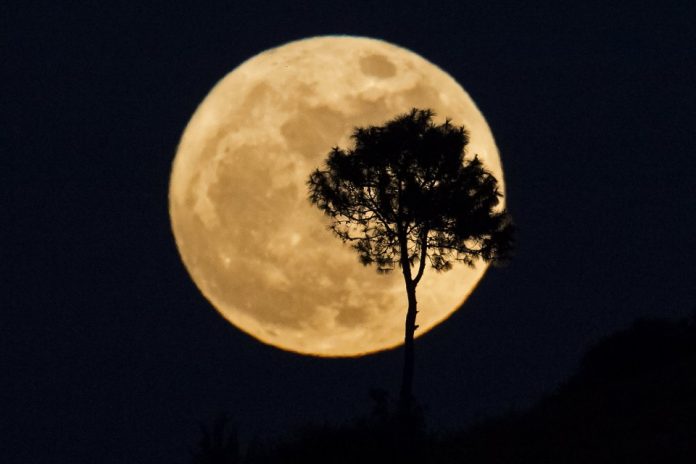SUPERMOONS are an incredible sight to behold and on January 31 sky gazers across the globe were able to witness an incredible phenomenon when a Super Moon coincided with a Blue Moon, a Blood Moon and a Total Lunar Eclipse. When is the next full super moon?
The supermoon, which is also a rare Blue Moon, took on a red eerie glow because it coincided with a total lunar eclipse clearly seen across America and the Eastern Hemisphere.
During a total lunar eclipse, the moon is sometimes known as a Blood Moon because of the way the atmosphere bends the light – giving it a stunning crimson blush.
What is a supermoon?
In 1979, astrologer Richard Nolle defined the term supermoon as “a new or full moon which occurs with the moon at or near (within 90 percent of) its closest approach to Earth in a given orbit.”
This means the moon would have to be 226,000 miles away from the earth to be defined as ‘super’.
The moon already has a relatively close proximity to earth, so the celestial orb seems a lot bigger when the supermoon phenomena occurs.
When is the next supermoon 2018?
According to Nasa, there will not be another supermoon visible in 2018.
The next supermoon will occur in 2019 and will fall on January 21, 2019.
There was also a supermoon on the night of January 1.
Supermoons are usually 14 per cent bigger and 30 per cent brighter than when the moon is at its furthest from Earth.
The scientific event is fairly rare and can occur around every 14 lunar months or full moons.
During the last such cycle, November 14, 2016, saw the most impressive supermoons in decades.
The November event was the closest supermoon since January 26, 1948, and will not be surpassed until November 25, 2034.















